Save the bees
Save The Bees Help us to grow local bee numbers
Raw Honey Products Direct From our Bee Farm
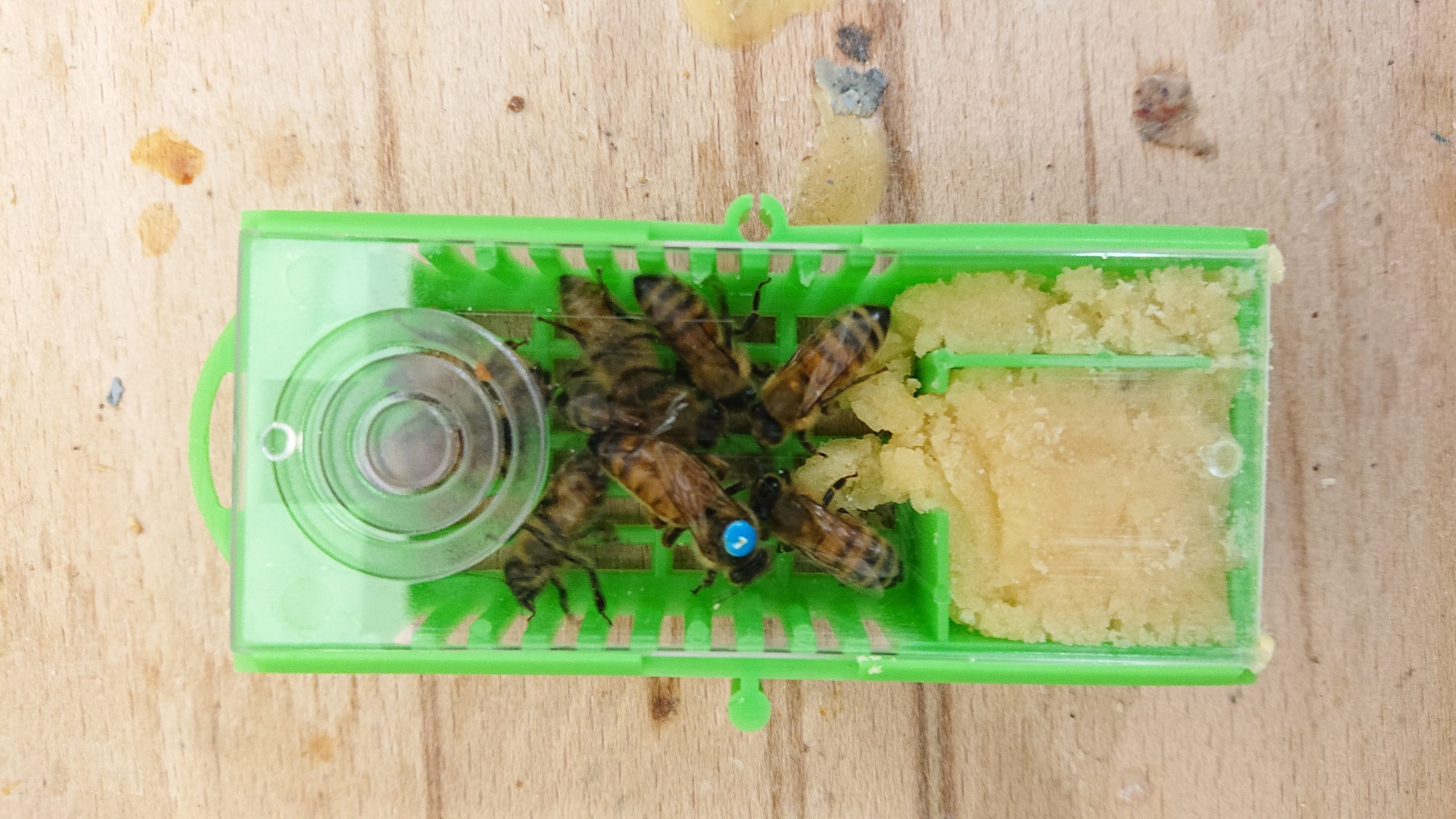
Queen bee introduction of any sort is never 100% successful, and there are lots of queen introduction methods out there. Therefore this guide is intended to be taken as a guide only for our customers to help with Queen introduction and in no way guarantees success.
When introducing a queen bee the first thing to be sure of is that the colony is queenless. A strange point you may say, but often there is the chance of a virgin queen being present in the colony, and despite a mated queen being offered to the colony if a virgin queen is present or queen cells then the colony, despite being offered a better alternative will certainly reject the mated queen in favour of trying to raise their own.
Replacing an existing queen
Cull the existing queen around 48 hours before introducing a new queen.
Introducing to an already queenless colony
Double check that there is not a virgin queen present, this will involve a thorough look through the hive and also check there are no queen cells. Also depending on how long the colony has been queenless for check for evidence of laying workers – there will be multiple eggs in cells if laying workers are present. If you suspect laying workers you need to address this issue before attempting to introduce a queen, as laying workers will kill a queen.
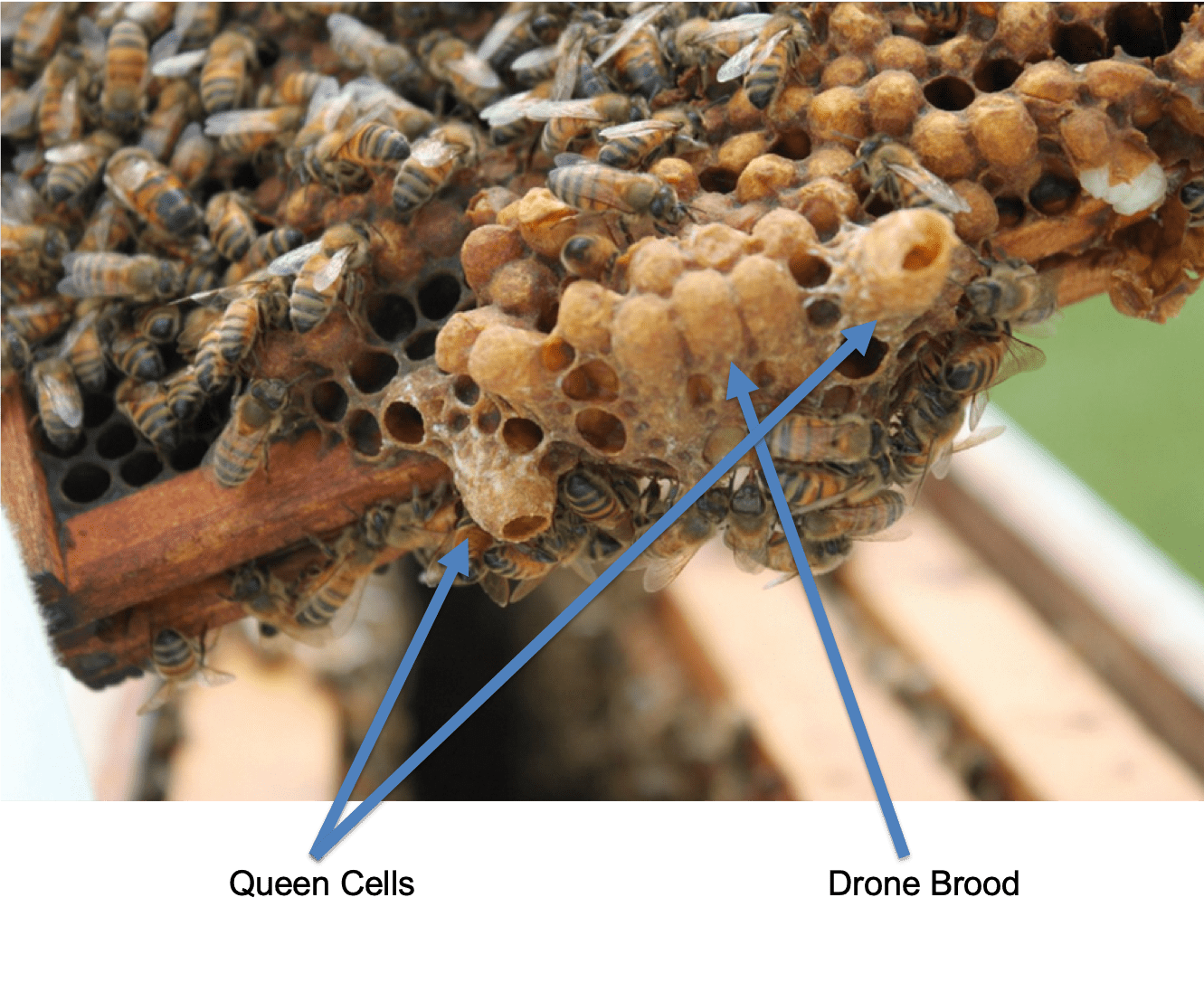
The queen will arrive through the post in the queen cage shown in the photo, with a candy plug at one end and with attendent workers. On arrival take a small droplet of water on the finger and smear on one side of the cage creating a film of water for the bees to drink. Although our bees are only caged on the day of sending, they will nonetheless be thirsty and wanting access to water. On arrival the queen in the cage may be very active crawling around and the attendant bees buzzing away. Sometimes they may be more sluggish, this is more often than not due to being cold during postage, if they are sluggish the best thing to do is warm them up briefly and introduce to the hive as soon as possible, only the warmth of the hive and nourishment from workers in the hive will help. Inspect the colony again to ensure the queenless state is still there, and repeat the checks for any virgin queen/ laying workers or queen cells. If queen cells are found you should destroy these. Ideally the best chances of a colony accepting a queen will be when no young brood or eggs are present as the colony then has no choice but to accept the mated queen as they are unable to build their own queen cells.


There are two schools of thought on introducing queens without attendents or with attendents. We always favour introducing queens on their own without attendent workers as these workers carry the pheremone of the hive they have come from and the workers in your hive may be hostile to them. Only decant the workers from the queen transport cage if you are confident to handle bees. Various methods exist for decanting workers from the queen cage. All of the below decanting techniques should be done in an enclosed space in case the queen flys off! You can very lightly spray the bees with a misting of sugar syrup solution so they don't fly when the cage is opened and you can decant that way. OR Inside a plastic bag or in the car or bathroom. If decanting the workers, once you have the queen bee in the cage on her own, remove the plastic tab covering the candy, and then take the queen cage to the hive for introduction. Importanly protect the queen from direct sunlight and extremes of temperature at all times. Queens can quickly die in the presence of cold or heat.

Once all the above checks have been completed the colony should be as ready as it will be to receive a new queen. A final check to do is to rest the queen cage ontop of the frame bars of the colony and see how the bees respond.
If they seem pleased to see her and are trying to get the queen free of the cage then it is a good sign. If they come up with stingers drawn it is a sign that the colony isn't ready to accept a new queen.
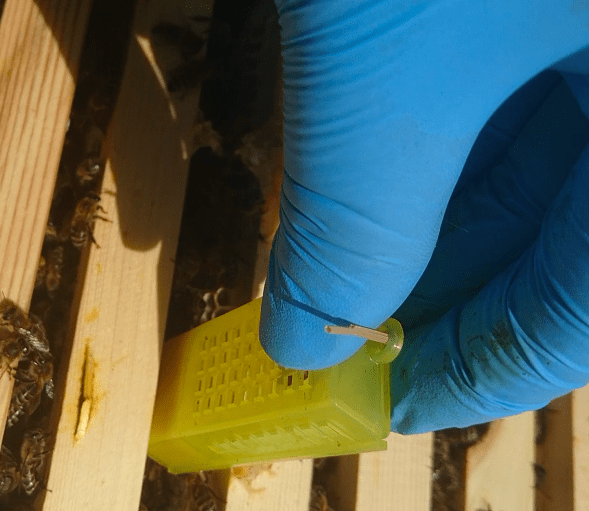
Finally, place the queen cage candy end down between the centre frames of the brood nest. use of a cocktail stick through the top tab of the cage helps to ensure the cage doesn't slip down Ensuring first that the plastic tab covering the candy is removed, which will allow the bees in the hive access to the candy to chew out and gradually release the queen over the course of a few days. It is important not to disturb the colony for 2 weeks before checking back to see that she is accepted and laying. Early disturbances can reduce acceptance.
A video Suzie created a few years ago, showing re-queening a colony due to a failing queen.
Save The Bees Help us to grow local bee numbers
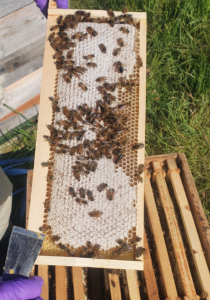
What is Raw Honey The simple definition of raw honey
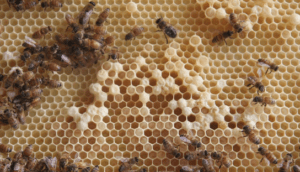
How to Deal with Laying Workers Laying Workers Laying workers